Cioppino (Fisherman’s Stew)
This post may contain affiliate links. Read my full disclosure policy.
Cioppino, a hearty Italian-American stew made with a medley of fresh seafood in a rich tomato and wine broth, perfectly captures the taste of the sea.
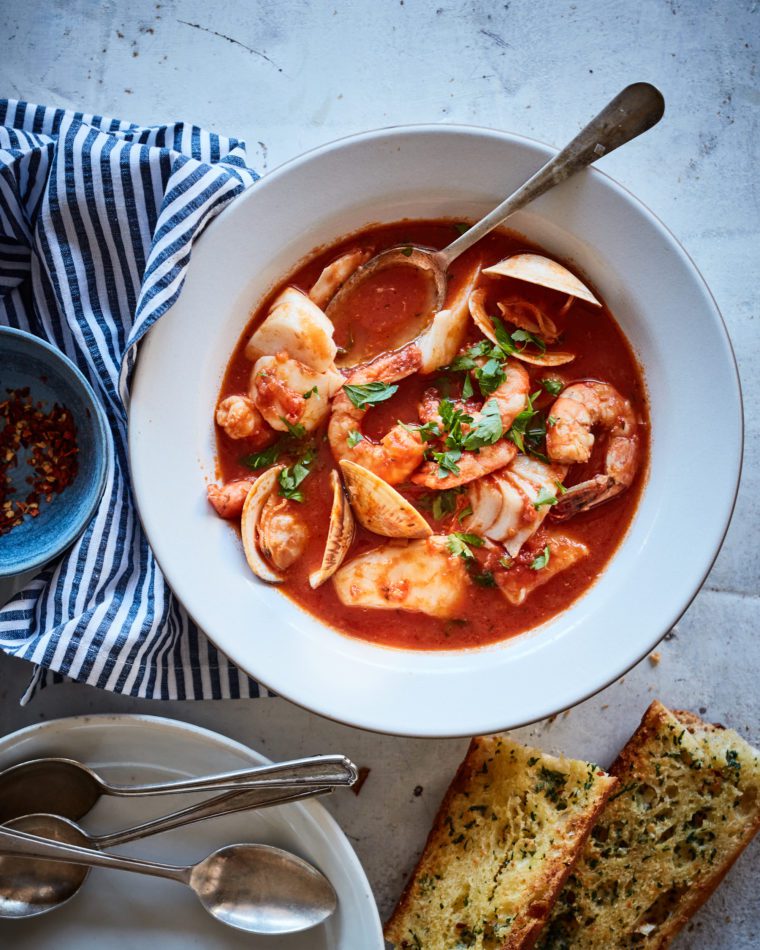
Photo by Johnny Miller, Clarkson Potter 2021
Brimming with fresh seafood in a tomato and wine broth that tastes like the sea, cioppino (pronounced chuh-pee-noh) is a rustic Italian-American fish stew. Its origins can be traced back to Italian immigrant fishermen in San Francisco, but my personal favorite version can be found at Portofino, a picturesque bayside restaurant in Longboat Key, Florida. Every year, my family gathers at Portofino over the holidays to enjoy the cioppino, and the chef was kind enough to share his recipe with me.
To make the recipe more accessible for home cooks, I have modified it by using fewer types of seafood (though crab, lobster, or mussels would all make wonderful additions). To fully enjoy this wonderful stew, serve it with garlic bread, focaccia, or a baguette to soak up the flavorful broth—and be sure to set out an extra bowl for shells and plenty of napkins.
Table of Contents
“I’m a culinary trained chef of 25 years working on private yachts now…All I can say is wow!!!! The broth is spot on.”
What You’ll Need To Make Cioppino
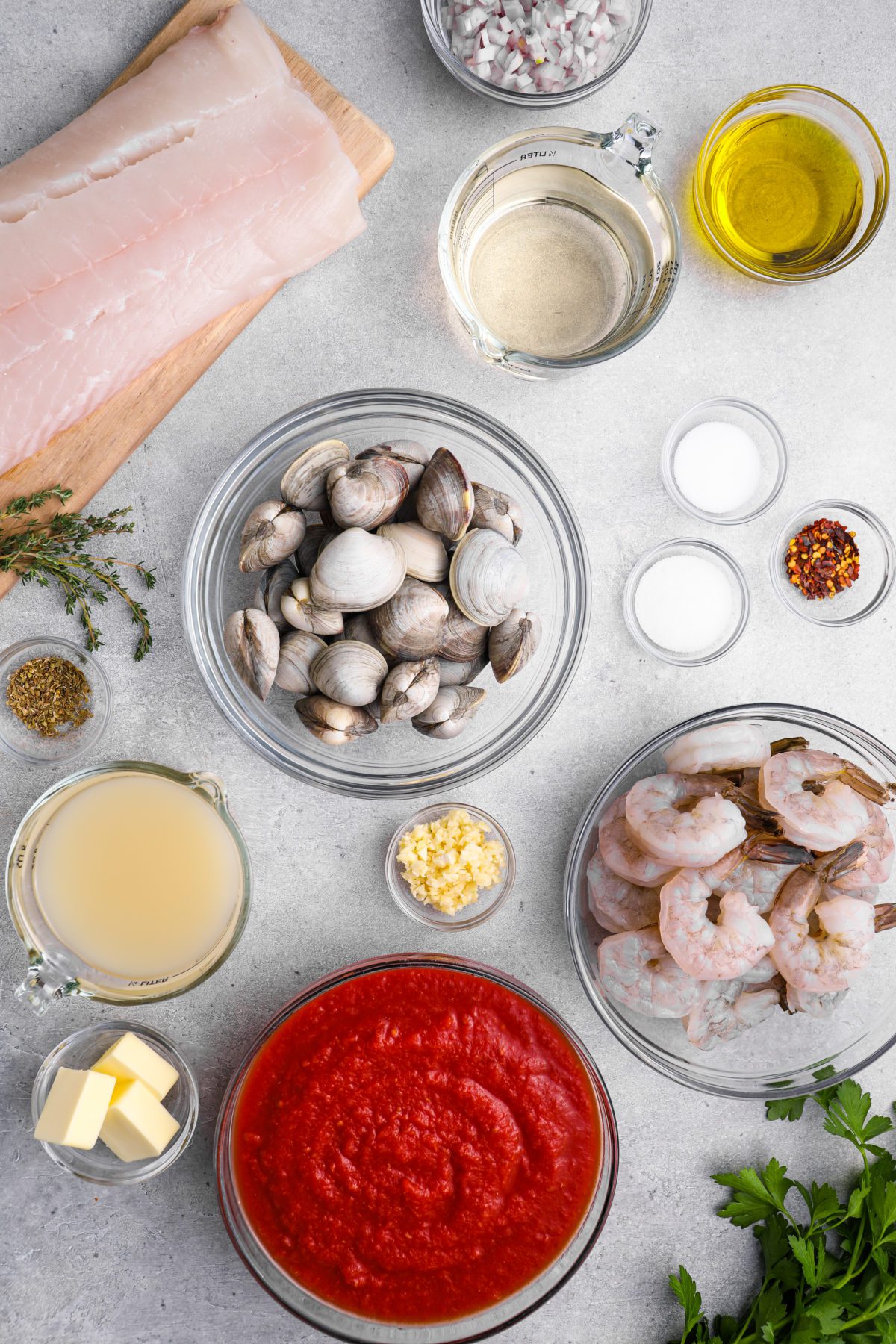
- Shallots and Garlic: These aromatics form the flavor foundation for the stew.
- White Wine: Adds acidity and brightness, complementing the seafood.
- Canned Crushed Tomatoes: Gives the cioppino its rich tangy flavor and vibrant color.
- Clam Juice: Lends a briny depth that makes cioppino truly taste like the sea.
- Crushed Red Pepper Flakes, Oregano, Thyme: This combination of spices and herbs adds warmth, earthiness, and a hint of heat.
- Firm-fleshed Fish Fillets: Chunks of halibut, cod, salmon, or snapper absorb the broth’s savory broth and contribute their own delicate taste to the stew.
- Butter: Added at the end of the cooking process to give the cioppino and a velvety finish and round out the acidity of the wine and tomatoes.
- Littleneck Clams: A traditional cioppino ingredient, the clams open up during cooking to release their sweet, briny juices into the broth. (See the FAQs for how to store and clean them.)
- Shrimp: With their slightly sweet, meaty texture, shrimp cook quickly and absorb the surrounding flavors.
- Jump to the printable recipe for precise measurements
Step-by-Step Instructions
To cook the stew, heat 1/4 cup of the oil over medium heat. Add the shallots and cook until soft and translucent, about 5 minutes. Add the garlic and for 1 minute more. Do not brown.
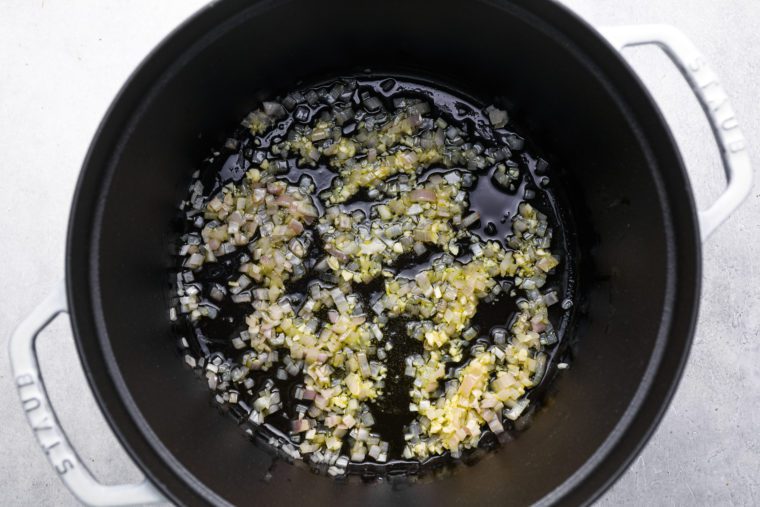
Add the wine and increase the heat to high. Boil until the wine is reduced by about half, 3 to 4 minutes.
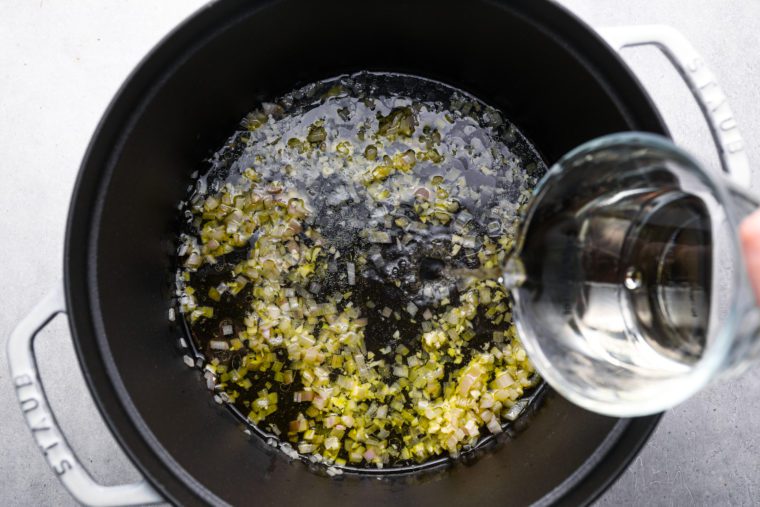
Add the crushed tomatoes, clam juice, sugar, 1 teaspoon of the salt, red pepper flakes, oregano, thyme sprigs, and 1 cup of water. Bring to a boil; reduce the heat and simmer, covered, for 25 minutes.
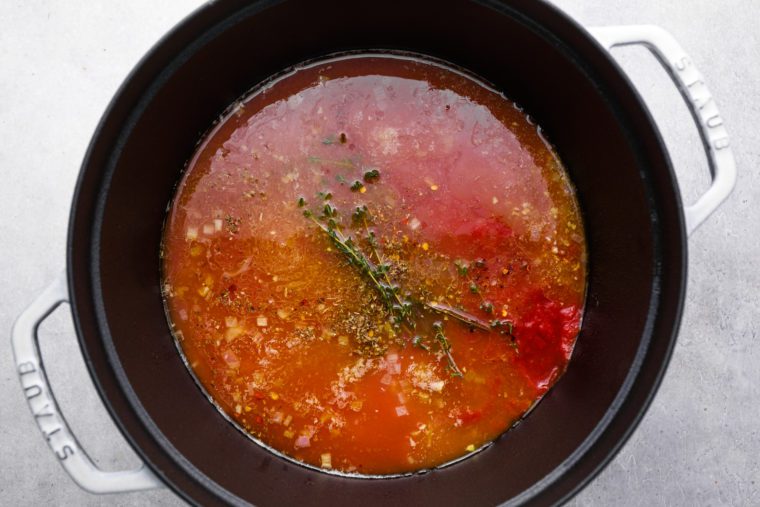
Meanwhile, while the stew is simmering, toss the fish with the remaining 2 tablespoons oil and remaining 3/4 teaspoon salt. Arrange the fish on the prepared baking sheet.
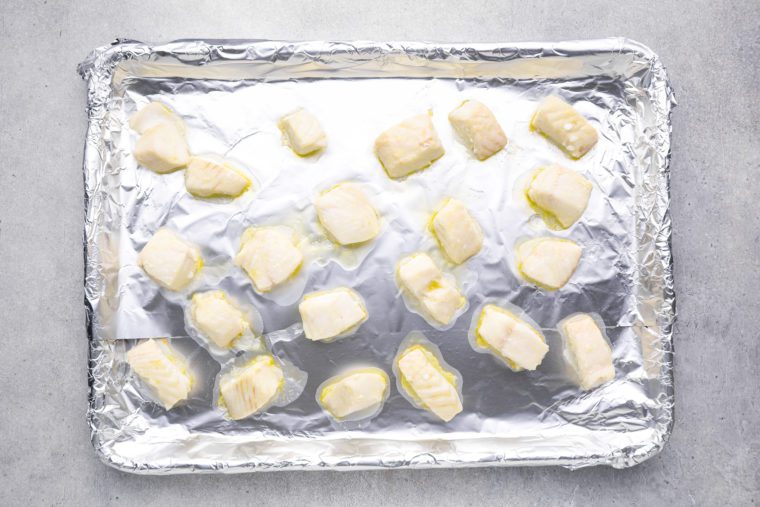
Bake for about 10 minutes at 400°F, or until just cooked through. Cover and keep warm until ready to serve. (Note: most cioppino recipes call for the fish to be simmered in the broth but I prefer to bake it separately so that it doesn’t fall apart or overcook.)
When the stew is done simmering, remove and discard the thyme sprigs and stir in the butter.
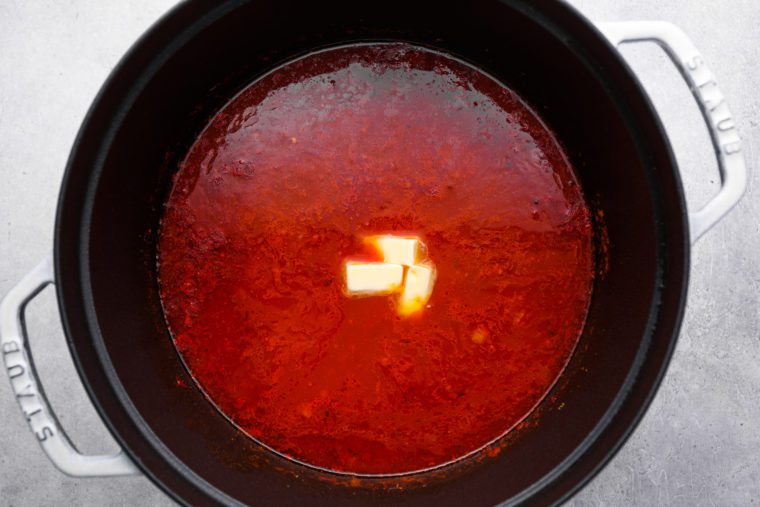
Add the clams and bring the stew back to a simmer.
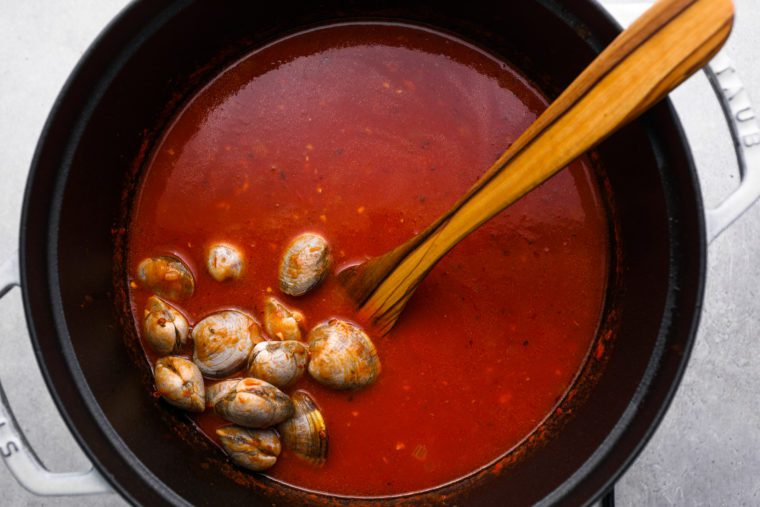
Cover and cook for about 6 minutes, until the clams have mostly opened. Gently stir in the shrimp and bring the stew back to a simmer.
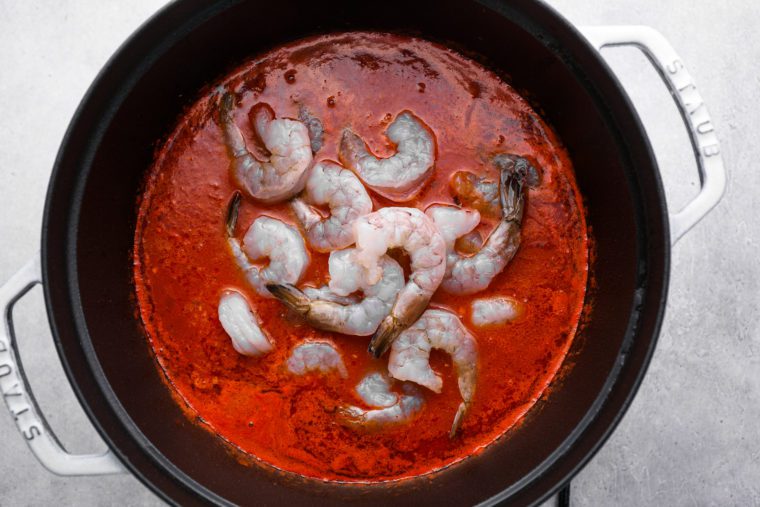
Cover and cook until the shrimp are just cooked through and the clams are completely opened, about 5 minutes. Discard any unopened clams. Add the chopped thyme, then taste the stew and adjust seasoning, if necessary.
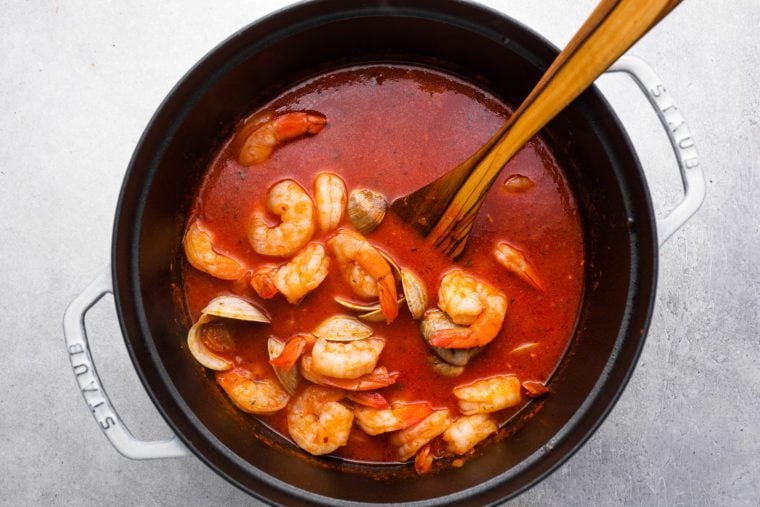
Divide the warm fish into serving bowls. Ladle the stew over top, dividing the clams and shrimp evenly amongst the bowls. Garnish with parsley, if using, and serve with garlic bread, focaccia, or a baguette for sopping up the broth.
Frequently Asked Questions
First, make sure all of the shells are tightly closed. If any clams are open, gently tap them against the countertop; if they are alive, they will close their shells. Discard any clams that do not close their shells or that have cracked or chipped shells.
Before cooking the stew, place the clams in a bowl and cover them with cool tap water. Let them sit for 20 minutes to an hour. During this time, the clams will expel sand from inside their shells. When you’re ready to cook, lift each clam from the water and rinse it, scrubbing if necessary, to get rid of any grit from the surface. (Note that most supermarkets sell farm-raised clams, which are already quite clean, so you may not find a lot of grit or sand.)
Clams are usually sold in a mesh bag because they are alive and need to breathe. If your fishmonger places them in a plastic bag, remove them from the bag immediately when you get home from the supermarket and place them in a bowl covered with a damp cloth in the refrigerator.
You can make the cioppino, without the seafood, up to 2 days ahead of time. Store it in the refrigerator, covered. When ready to serve, bake the fish and bring the stew to a simmer before adding the seafood.

Video Tutorial
You May Also Like
Cioppino (Fisherman's Stew)
Cioppino, a hearty Italian-American stew made with a medley of fresh seafood in a rich tomato and wine broth, perfectly captures the taste of the sea.
Ingredients
- ¼ cup + 2 tablespoons extra-virgin olive oil, divided
- ⅔ cup finely chopped shallots, from about 3 shallots
- 3 cloves garlic, minced
- 1 cup white wine
- 1 (28 oz) can crushed tomatoes
- 2 (8 oz) bottles clam juice
- 2 teaspoons sugar
- 1¾ teaspoons salt, divided
- ½ teaspoon crushed red pepper flakes
- ½ teaspoon dried oregano
- 7 sprigs fresh thyme, plus 1 teaspoon fresh chopped thyme
- 1½ pounds firm-fleshed fish fillets, such as halibut, cod, salmon, snapper, etc., cut into 2-inch pieces
- 3 tablespoons unsalted butter
- 1½ pounds (about 18) littleneck clams, scrubbed (see note)
- 1½ pounds extra large raw shrimp, peeled and deveined
- Fresh chopped Italian parsley, for garnish (optional)
Instructions
- Preheat the oven to 400°F and set an oven rack in the middle position. Line a baking sheet with aluminum foil and set aside.
- In a large pot, heat ¼ cup of the oil over medium heat. Add the shallots and cook, stirring frequently, until soft and translucent, about 5 minutes. Add the garlic and cook, stirring constantly, for 1 minute more. Do not brown.
- Add the wine and increase the heat to high. Boil until the wine is reduced by about half, 3 to 4 minutes.
- Add the crushed tomatoes, clam juice, sugar, 1 teaspoon of the salt, red pepper flakes, oregano, thyme sprigs, and 1 cup of water. Bring to a boil; reduce the heat and simmer, covered, for 25 minutes.
- Meanwhile, while the stew is simmering, toss the fish with the remaining 2 tablespoons oil and remaining ¾ teaspoon salt. Arrange the fish on the prepared baking sheet and bake for about 10 minutes, or until just cooked through. Cover and keep warm until ready to serve.
- When the stew is done simmering, remove and discard the thyme sprigs and stir in the butter. Add the clams and bring the stew back to a simmer. Cover and cook for about 6 minutes, until the clams have mostly opened. Gently stir in the shrimp and bring the stew back to a simmer; cover and cook until the shrimp are just cooked through and the clams are completely opened, about 5 minutes. Discard any unopened clams. Add the chopped thyme, then taste the stew and adjust seasoning, if necessary.
- Divide the warm fish into serving bowls. Ladle the stew over top, dividing the clams and shrimp evenly amongst the bowls. Garnish with parsley, if using, and serve with garlic bread, focaccia, or a baguette for sopping up the broth. Set out a second bowl for shells and plenty of napkins.
- Make Ahead: The stew, without seafood, can be made 2 days ahead and stored in the refrigerator, covered. When ready to serve, bake the fish and bring the stew to a simmer before adding the seafood.
- Note: Littleneck clams are readily available at most supermarkets and are usually sold in a mesh bag because they are alive and need to breathe. If your fishmonger places them in a plastic bag, remove them from the bag immediately when you get home from the supermarket and place them in a bowl covered with a damp cloth in the refrigerator. To prepare the clams for cooking, first, check that they are alive by making sure all of the shells are tightly closed. If any clams are open, gently tap them against the countertop; if they are alive, they will close their shells. Discard any clams that do not close their shells or that have cracked or chipped shells. To clean, place all of the clams in a bowl and cover them with cool tap water. Let the clams sit for 20 minutes to an hour. During this time, the clams will expel sand from inside their shells. When you’re ready to cook, lift each clam from the water and rinse it, scrubbing if necessary, to get rid of any grit from the surface. (Note that most supermarkets sell farm-raised clams, which are already quite clean, so you may not find a lot of grit or sand.)
Pair with
Nutrition Information
Powered by ![]()
- Per serving (6 servings)
- Calories: 575
- Fat: 23 g
- Saturated fat: 6 g
- Carbohydrates: 20 g
- Sugar: 9 g
- Fiber: 4 g
- Protein: 69 g
- Sodium: 1,650 mg
- Cholesterol: 287 mg
This website is written and produced for informational purposes only. I am not a certified nutritionist and the nutritional data on this site has not been evaluated or approved by a nutritionist or the Food and Drug Administration. Nutritional information is offered as a courtesy and should not be construed as a guarantee. The data is calculated through an online nutritional calculator, Edamam.com. Although I do my best to provide accurate nutritional information, these figures should be considered estimates only. Varying factors such as product types or brands purchased, natural fluctuations in fresh produce, and the way ingredients are processed change the effective nutritional information in any given recipe. Furthermore, different online calculators provide different results depending on their own nutrition fact sources and algorithms. To obtain the most accurate nutritional information in a given recipe, you should calculate the nutritional information with the actual ingredients used in your recipe, using your preferred nutrition calculator.

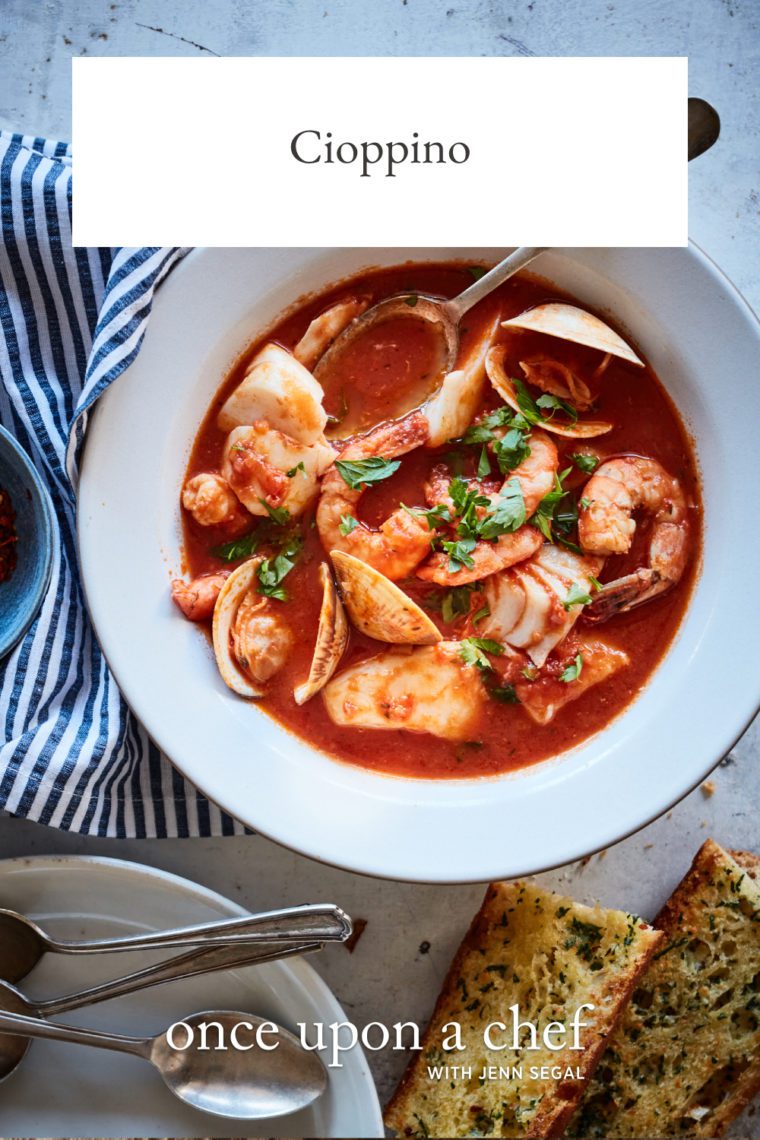
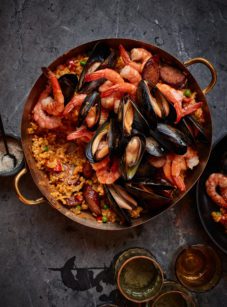

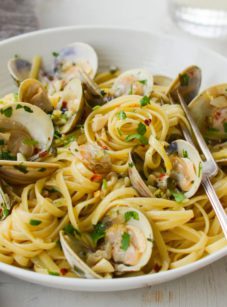
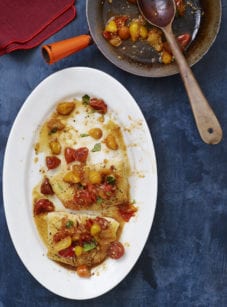

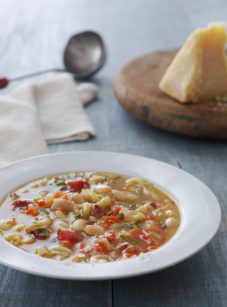
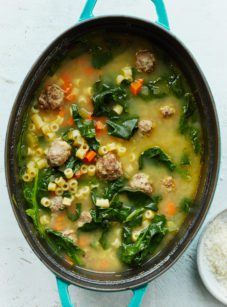
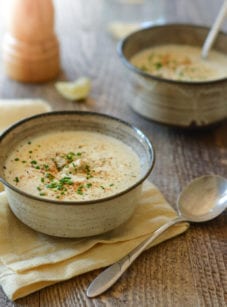
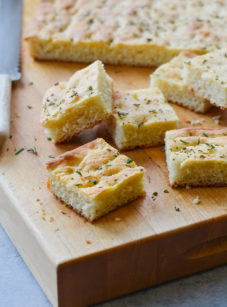
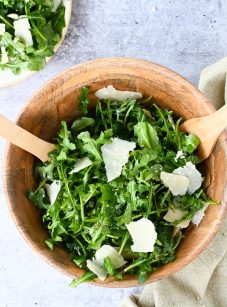
Wow, this recipe is delicious. My parents are both Italian and very particular about their Italian food so I was a bit nervous to try a new recipe when I was having them for dinner. They loved every last bite! Highly recommend this dish, I followed the directions exactly as written.
We never had a problem buying clam juice when we lived in Toronto. But we’ve since retired to France, and can’t find it anywhere. In fact, no one seems to know what we’re talking about. What about using Clamato juice to cook? It would combine the flavours of tomato and clam juice. Would that work? Any other ideas! Thanks!
Sure, Loren, I think that should work. Please LMK how it turns out!
Instead of clam juice, I used shrimp shells to make stock. This is a delicious recipe! Sometimes tomato-based soups are too tomatoey, but this was well-balanced!
Hi Jen,
I’m so glad to have found your blog. For Thanksgiving, I made them autumn soup with sweet potatoes, carrots and apple. It was delicious and got rave reviews from my husband. We have some lobster meat to use and I’d love to try it in your Cioppino recipe for Christmas Eve. Do you have any recommendations for doing this? Should I bake first, then add last? How long should I cook the lobster, so that it doesn’t over or get rubbery? I’m also interested in how you might use lobster in place of crab meat in your delicious crab cake recipe. Thank you!!
Hi Michele, glad to hear you enjoyed the soup! For the cioppino, it’s fine for you to add some lobster. I would cook it first and then add it to the soup toward the end just to warm it up. And I think it would be fine to use cooked lobster in the crab cake recipe; you just want to make sure that the pieces are about the same size as lump crab meat so that the cakes will hold together. Hope that helps!
Out-of-this-world delicious! It was better than restaurants! I had never cooked with live clams before. Thanks for the tip about throwing out the ones that hadn’t opened.
Everybody said it was the best meal I’ve made this summer in Maine. I added scallops which I poached in cold milk and before serving added chunks of cooked lobster. The halibut chunks were a little dry and I think it was because I cut the chunks too small. Will definitely make many more times.
I’m so happy to find this website! I made this a week ago and it is one of the best cioppino I’ve had. Since my husband is allergic to shrimp, I had to substitute with scallops, mussels, and squid for added flavor. The results were great! The tomato based broth was very flavorful without being too acidic and “tomatoey”, and my husband was very happy to finally be able to eat cioppino. Before, eating seafood based soups or stews at restaurants were always out of the question for him due to shrimp allergy. Jen, thanks for the great recipes!!!
Hi Jen,
I made this recipe and everyone loved it!
If I wanted to try it with lobster instead of halibut; would I toss the lobster with olive oil and salt and cook in the oven, or, would I put it in the sauce when I add the shrimp?
A huge thank you for all of your wonderful recipes!
Lynda
Hi Lynda, I would go the route of cooking the lobster first and then add it to the soup toward the end just to warm it up. Hope you enjoy!
I tried this recipe last night with cod, lobster tail and shrimp. I tweaked the recipe with more garlic. I boiled my shrimp shells in water to make a stock and used that instead of water. When the sauce was done, I placed the cod pieces in a frying pan and covered with the sauce and braised the fish. When the fish was cooked, I returned the contents of the frying pan back to the pot. The fish remained intact.
Overall a very good recipe
First, every recipe I’ve tried from you is a winner. Today I’m making your double chocolate biscottis which I make regularly. I have your cookbook as well
As for the cioppino, my husband is allergic to shellfish. Can I just use thick white fish (cod, haddock) for this? I do think he’d be ok with the clam juice in it. He can’t eat the shrimp or clams. Thanks
So glad you enjoy the recipes, Gerilyn! Any seafood will work in the cioppino, so feel free to substitute.
We have made this at least 6 times and love it. We stay true to the broth recipe and often use haddock, mussels and shrimp and it’s fabulous. Could we make the broth ahead (with wine) and freeze it, then add butter and seafood as we simmer it?
Glad you like it, Erin! Sure, I think it would be fine to prepare the broth and freeze it. 🙂
Did you try this? I’d like to make this ahead of time and then reheat. I cannot imagine why it wouldn’t work, but…..
Haven’t tried this yet but can’t wait. Should I double the shrimp here if I omit the clams or do you have a better idea? Thanks.
Hi Chad, That works. Hope you enjoy it!
Every time I make this it is beyond spectacular. Last night, I made a quick shrimp stock with the shells and added that with the clam juice. (I hate to throw those shells out!) Also, a couple anchovies in the sauce gives it a nice added zip. Another huge hit by Jenn.
I made this for the first time this past Good Friday for dinner, I followed the recipe exactly. It was a huge hit and my very picky Portuguese husband thought it was amazing! Will definitely make this again! Thanks again Jenn!